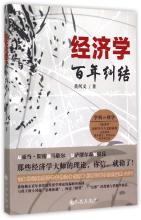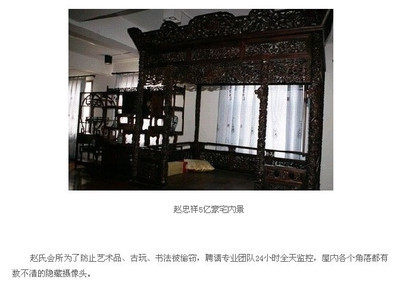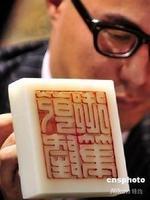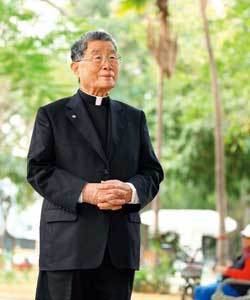《A大米模型》
假设央行里只有100张货币(每张1元)。号码从No:1,No:2,…,No:100.
1、在时间T1,A向央行(中间省略商行)贷款100张货币,号码是No:1,No:2,…,No:100.同时,A预付利息3张货币,号码是No:1,No:2,No:3;预缴税收是2张货币,号码为No:4,No:5.(这时央行上缴财政3张货币,No:1,No:2,No:3)
2、在时间T2,A生产出105公斤大米。
3、在时间T3,A卖出100公斤大米,每公斤1张货币,销售收入100张货币,号码是No:1,No:2,…,No:100.(其中5张是财政购买大米支出,号码是No:1,No:2,No:3;No:4,No:5)
4、在时间T4,A购买农具付出5张货币,号码是No:1,No:2,No:3,No:4,No:5;
5、在时间T5,A又出售5公斤大米,每公斤1张货币,销售收入5张货币,号码是No:1,No:2,No:3;No:4,No:5.
6、在时间T6,A归还央行100张货币,号码为No:1,No:2,…,No:100.
(在时间T6,A共支付央行本利分两次105张货币,A已没有欠央行贷款)
A的会计报表 (简表) 表1 时间T5
----------------------------------------------------
资产: 负债:
---------------------------------------------------------------
(实际大米105公斤销售收入105元, 贷款 100元
5元购买农具)
现金 100元
一架农具 5元 利息 3元
预付利息 3元 税收 2元
预付税收 2元
资产合计 110元 负债合计 105元
权益(利润)5元
--------------------------------------------------
在《A大米模型》中,我们看到三个事实:
事实1、A分两次归还银行贷款105张货币(在T1和T6)。
事实2、A分两次销售收入105张货币(在T3和T5)。
事实3、105公斤大米交换了105张货币。(在T3和T5)。
推理1、(事实3)105大米-(事实2)105货币=0;(大米全部交换了货币,所以A手里大米=0,显然把货币拿去烧掉,A手里就是0)。
推理2、(事实2)105张货币-(事实1)105张货币=0 。
根据推理2、105张货币-105张货币=0,A手里没有利润,但现实中,A手里出现了5元利润(见《A大米模型》)。
在逻辑推理上,事实1,2,3和推理1,2都没有错;在现实上A出现这个5元利润也不错。显然,逻辑推理和现实不应该存在矛盾,所以逻辑推理的结果和现实的结果必有一错;谁能找出错在哪里?
我现在发现,我们今天的经济学可能出现了——大问题。这个问题没有我们想象的那么简单。这个问题,也许对我们的智力是一个挑战
An economic paradox - - do 5 Yuan profits come from where
BY: HUA JIAN QI
“A Rice Model”
In supposition Central Bank has 100 currencies (each 1 Yuan). Number from No:1, No:2,…, No:100.
1st, (Middle omission Commercial bank) loans 100 currencies in time T1, A to Central Bank, the number is at the same time No:1, No:2,…, No:100., a prepaid interest 3 currencies, the number is No:1, No:2, No:3;prepay the tax is 2 currencies, the number is No:4, No:5. (by now Central Bank turning in finance 3 currencies, No:1, No:2, No:3)
2nd, Produces 105 kg rice in time T2, A
3rd, Sells 100 kg rice in time T3, A, each kg 1 currency, the sales revenue 100 currencies, the number is No:1, No:2,…, No:100. (5 are the financial purchase rice disbursements, the number is No:1, No:2, No:3; No:4, No:5)
4th, Pays 5 currencies in the time T4, A purchase farm tool, the number is No:1, No:2, No:3, No:4, No:5;
5th, Sells 5 kg rice in time T5, A, each kg 1 currency, the sales revenue 5 currencies, the number is No:1, No:2, No:3; No:4, No:5.
6th, Returns the Central Bank 100 currencies in time T6, A, the number is No:1, No:2,…, No:100. (altogether pays the Central Bank principal and interest in time T6, A to pide two time 105 currencies, A has not owed Central Bank to loan)
A Accountant Report form (simple list)
Table 1 Time T5
------------------------------------------------------------------------------------------
Property: Debt:
(actual rice 105 kg sales
revenue 105 Yuan, 5 Yuan
purchase farm tools)
Cash 100 Yuan Loan 100 Yuan
A farm tool 5 Yuan Interest 3 Yuan
Prepaid interest 3 Yuan Tax 2 Yuan
Prepay tax 2 Yuan Debt sum total 105 Yuan
Property sum total
110 Yuan Rights and interests
(profit)
5 Yuan
-------------------------------------------------------------------------------------------

In "A Rice Model", we see to three facts:
The fact 1, A pide two times returns the bank loan 105 currencies (in T1 and T6).
The fact 2, A pide two sales revenue 105 currencies (in T3 and T5).
The fact 3, 105 kg rice have exchanged 105 currencies. (in T3 and T5).
Infers 1, (fact 3) 105 kg rice - (fact 2) 105 currency =0; (rice has exchanged currency completely, therefore in A rice =0, takes away obviously currency burns down, in A is 0).
Infers 2, (fact 2) 105 currencies - (fact 1) 105 currency =0.
According to infers 2, 105 currency - 105 currency =0, in A does not have the profit, but in the reality, in A presented 5 Yuan profits (to see "A Rice Model").
In the logic reasoning, the fact 1,2,3 and infer 1,2 does not have the mistake; A presents this 5 Yuan profits in the reality also not to have the mistake. Obviously, the logic reasoning and the reality should not have the contradiction, therefore logic reasoning‘s result and the reality result must have a mistake; Who can discover the mistake in where?
(I discovered now that our today‘s economic possibly had - - the big problem. This question we have not imagined that simply. Perhaps this question, to our intelligence is a challenge)
 爱华网
爱华网



